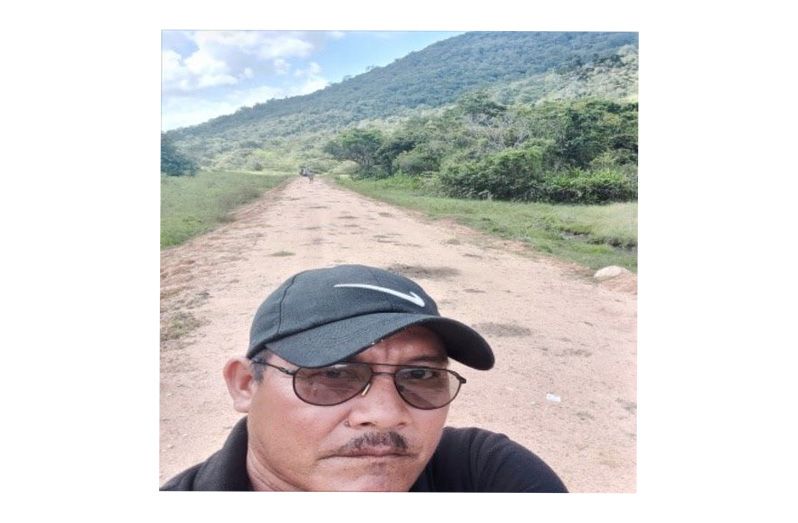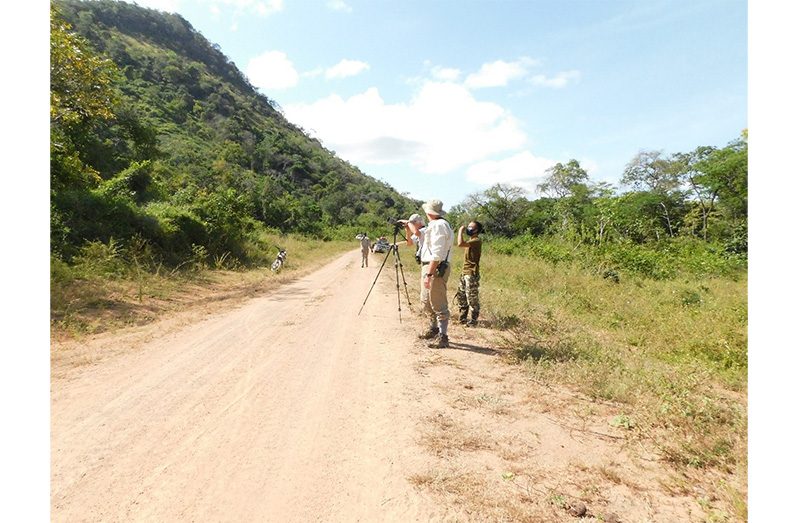Andrew Albert, former Toshao of Karasabai Village, South Pakaraimas, Region Nine (Upper Takutu–Upper Essequibo), didn’t realise the importance of the sun-kissed parakeets in his community when he was a boy.
He was 11 years old in 1982 when many of the sun-kissed parakeets were shipped to Georgetown in cages in the early 1970s via the then Guyana Airways Corporation (GAC) aircraft, which used to land at Karasabai, and he never knew how important they were to his community.
However, in 1997, Albert said he was then 26 years old when he first got to know a little about wildlife—especially the sun-kissed parakeets—after seeing the birds in cages years before.
“I was extremely happy to see the sun-kissed parakeets in the wild. Since then, I thought about two words—wildlife—before I took a special interest in these birds,” he said.
Albert related that there were many things he was not aware of regarding the sun-kissed parakeets, and he began to do his own research around the village, especially their foraging area, to find out what types of fruits these birds were eating.

His findings included the area where the birds were feeding, what time in the morning the birds were coming to feed, how long they would stay, and what time in the afternoon they would fly home to their roost site—where? He never knows.
Albert added that he did his own research on the names of fruits in the Macushi dialect and looked for other species found in and around Karasabai Village.
“All these activities I did were done on a voluntary basis. I had no other special interest except for the wildlife and took a particular liking to the sun-kissed parakeets,” he reasoned.
Albert explained that in 2000 when he was elected for the post of Toshao of his village, within a short period of two years, tour operators began to make contact with him, seeking permission to do special birding.
He pointed out that Karasabai Village is the only place where the sun-kissed parakeets can be found alongside the foothills of the South Pakaraimas mountains.
Albert stated that in 2017, he met with Dr. Lorakim Joyner, a representative of One Earth Conservation, who shared how important it is to do a sun-kissed parakeet survey to find out how many were in the village.
The native of Karasabai Village told Pepperpot Magazine that Dr. Lorakim Joyner came to the village as a consultant after consultations with the Village Council’s permission, as well as that of the Ministry of Amerindian Affairs and the Environmental Protection Agency (EPA), to do more in-depth research on the sun-kissed parakeets.
He pointed out that in 2019, training for the Sun-kissed Parakeet Rangers Programme began and was facilitated by Dr. Lorakim Joyner of One Earth Conservation, during which the first bird survey was done in different locations—Karakasai farmlands, Temereng farmlands (Ireng River) and the Morris Mine.
Albert revealed that during the survey, a total of 406 sun-kissed parakeets were counted without duplication, alongside other species like the Painted Parakeets, Blue-headed Parrots, Red and Green Macaws, Yellow-crowned Amazon Parrots, Red-shouldered Macaws, Red-bellied Macaws, and Brown-throated Parakeets.
He disclosed that at the end of the training programme, 20 rangers were certified to conduct official counting of the birds during the month of November each year.
As such, a Memorandum of Understanding (MOU) was signed by the Village Council, Parakeet Rangers, and One Earth Conservation to conserve the birds as protected species.
Albert added that the rangers were tasked with the continuation of the Sun-kissed Parakeet Conservation Project—to protect the birds from being trapped, to educate poachers about the importance of the sun-kissed parakeets, and also to educate the community at large.
He reported that out of the 20 rangers, today they have only 10 active rangers who go out into the field every month to keep checking on these birds to ensure they are not trapped—so the entire sub-district is aware of what the rangers are doing.
Karasabai is called the home of the sun-kissed parakeet, a golden bird that was nearly extinct due to trapping. Today, measures have been put in place to allow these birds to remain free in their natural habitat.
It is one of the natural wonders of this remote village, attracting visitors eager to see these birds that emerge in the mornings and evenings to the delight of residents.


.jpg)











